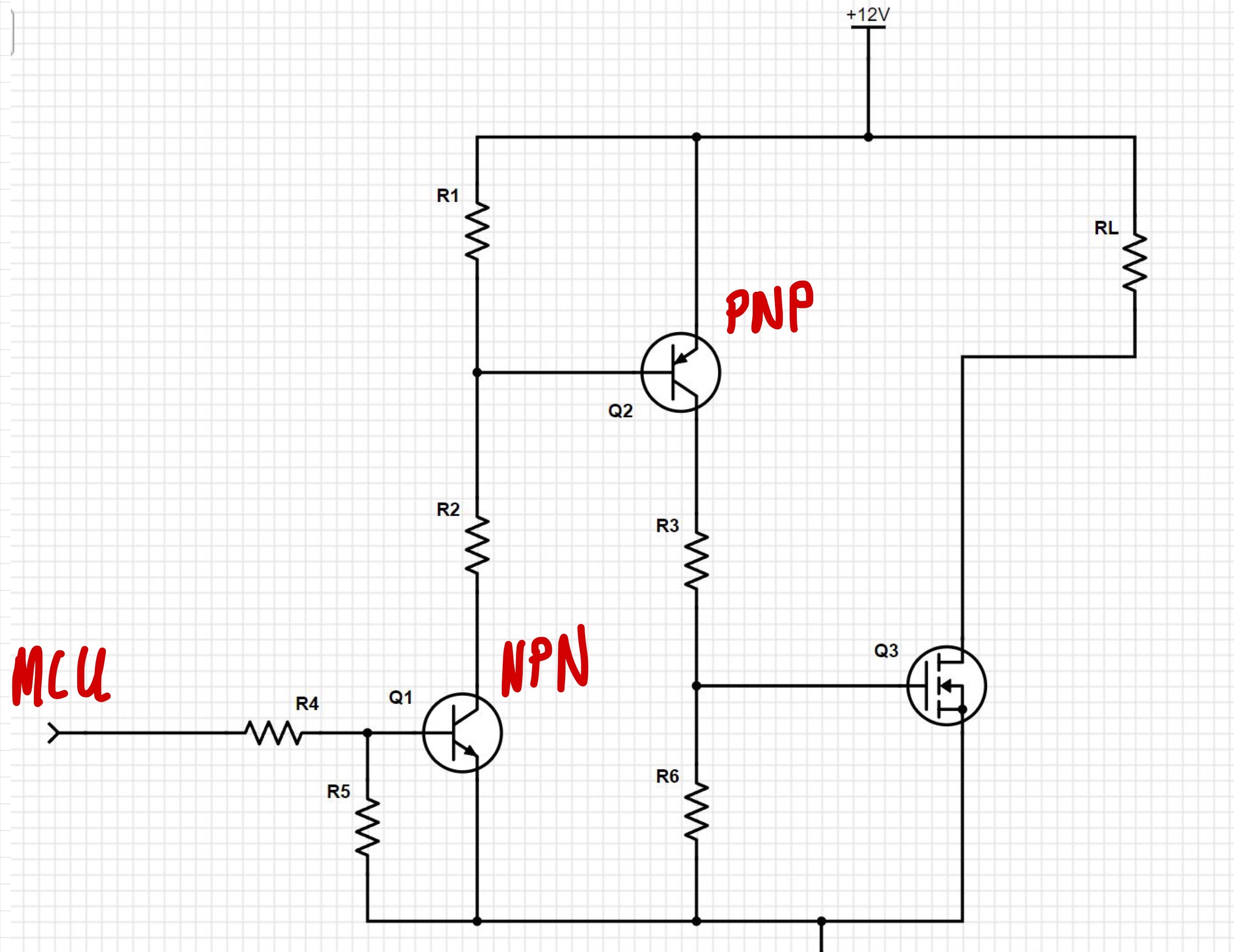I have a question regarding this circuit as a basic (!) discrete MOSFET driver switching circuit:
Points I do understand:
- Because the MOSFET is most likely a non-LL-MOSFET, we need higher voltages on the GATE-pin in order to charge the internal capacity of the MOSFET to minimize R_(dsDS,on).
- Therefore a NPN transistor would be ideal (with R4 and R5), to switch the voltage on the gate pin with the input voltage of the circuit and GND.
- R6 is used to limit the possibility of a floating Gate-pingate pin.
Question:
But why do you want to use the PNP-transistor transistor Q2? Which purpose does it have in this exact circuit? Wouldn't it be sufficient to only charge and discharge the Gategate pin via the NPN-transistor transistor connected to the MCU?
Thankful for an explanation on this circuit regarding the PNP-transistor.

